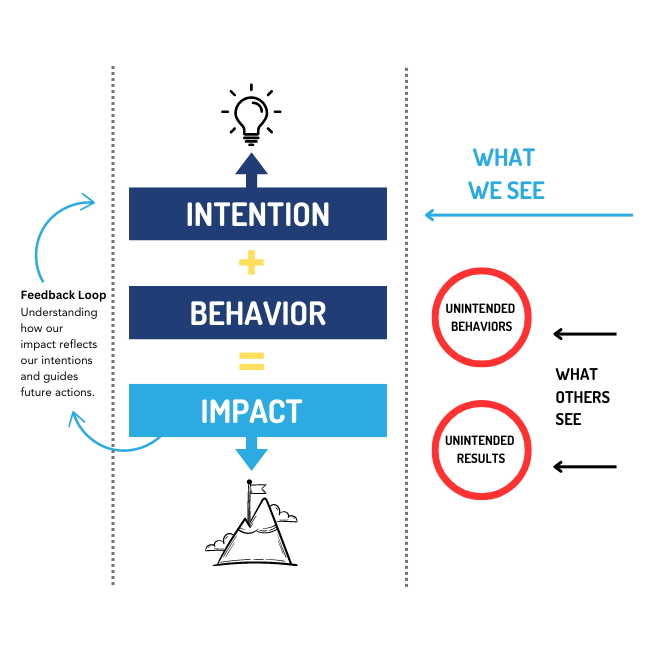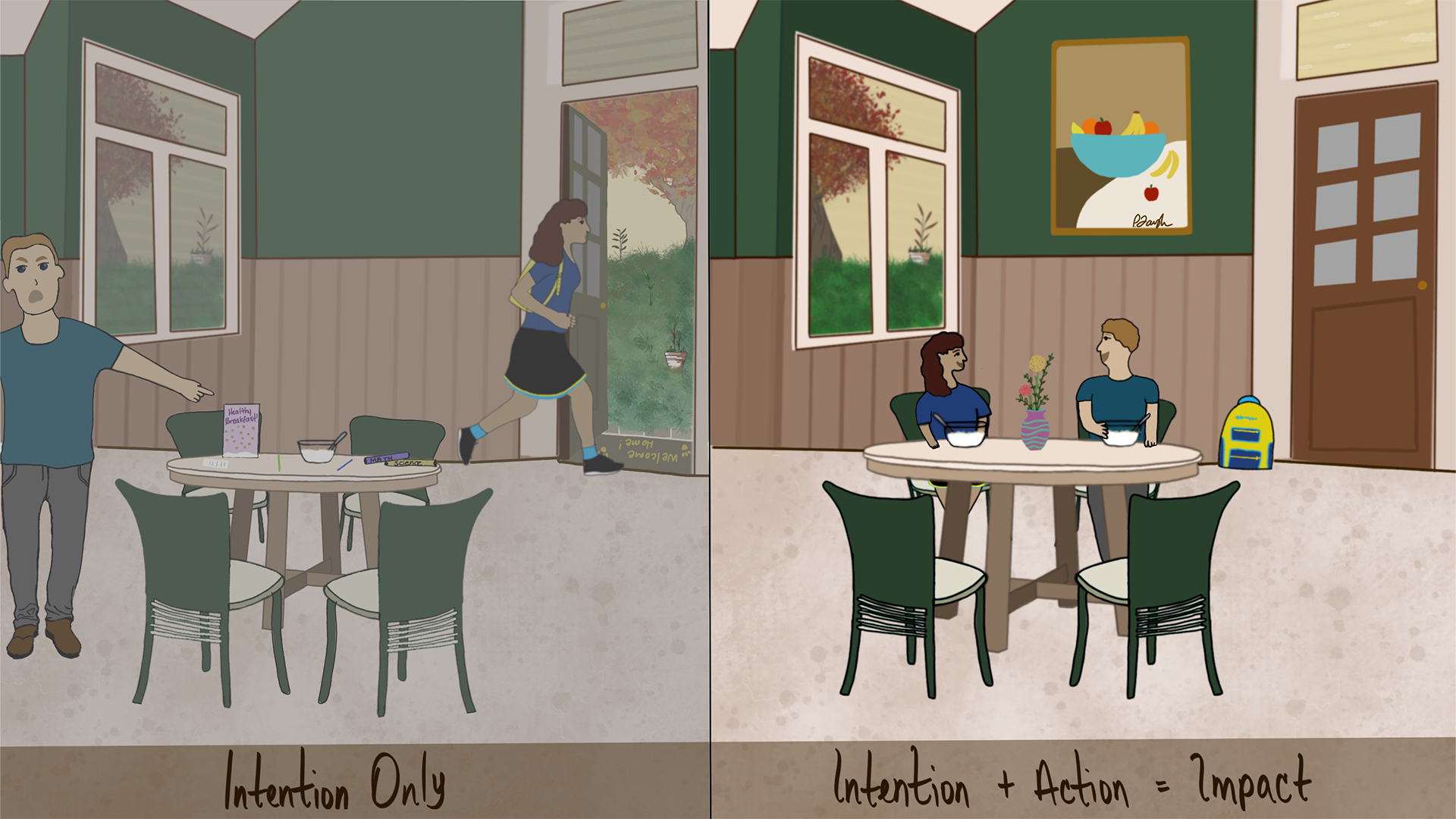By Jon Patton – April 2024
“If my actions don’t reflect my intentions, do my intentions even matter?”
Imagine this – it’s circa late 90s, I’m working for American Express and I’ve just returned home, buzzing with insights from a leadership workshop. Eager to experiment with my newly learned concepts, I turned to my two eldest children, James and Dan, who were 11 and 9 years young at the time. So, with a hopeful heart, I posed the ultimate feedback question:
“How am I doing as your dad?”
Cue the uncomfortable silence before one of them suggested, “Can we write it down?”. A few moments later, I was left alone with a piece of torn paper that I would later keep in my wallet for many years to come. It read, “Can you give us a second chance sometimes?”
I was crestfallen, and the emotion still comes over me as I write this story. I love my children deeply– I had never intended to seem overly critical. But despite my best intentions, that was the impact my behavior had on them. Those seven words served as a powerful reminder that my behavior – ‘the how’ – was as significant as my intentions – ‘the why’.
This experience raised a crucial question: If my actions don’t reflect my intentions, do my intentions even matter?
In my role as a father, I aimed to show love and care, which is not unlike the goal of many leaders who strive to be effective and supportive. What I’ve realized is that, whether at home or in leadership, our intentions are not always apparent to others since they tend to only live inside our minds. It is only through our behavior that our intentions become visible, shaping how others perceive our impact.
Adjusting Leadership Tactics: Practical Steps
In leadership, as in all areas of life, perception often holds more weight than intention. To truly connect our internal objectives with external perceptions, the key is to step outside of our own world of what we see and reflect on the world through the eyes of others. Contemplate a recent work scenario where the results didn’t quite match your intentions, or a relationship that’s not as strong as you’d hoped. Our Intentions/Behavior Model serves as a compass in these situations, prompting leaders to realign their behavior with their intentions and the perceptions they wish to create.

Leaders can navigate toward improved outcomes by embracing this reflective process:
- Identify Your Intention:
- What is my intention in this situation? Writing it down allows you to make it conscious.
- Evaluate the Intention’s Effectiveness:
- Is this an effective intention? Does it benefit only me and how will these intention driven behaviors affect others? Does it create a win-lose situation for your colleagues, clients, or boss?
- Weigh the Importance of Your Intention:
- Could there be a more significant intention that should be prioritized? Aiming for a promotion is commendable, but be mindful of potential unintended impacts. It may be necessary to balance this with the intention to support your colleagues.
- Communicate and Request Feedback:
- It’s beneficial to communicate your intention to those involved and ask for their feedback on how they perceive your behaviors. A leader might find that what they believe to be developmental support is actually seen as micromanagement. Use this insight to adjust both your intentions and actions accordingly.
- Align Thoughts with Behavior:
- Remember thoughts drive behavior. Once you have clarity about your intention, write it down and place it somewhere you will see regularly. This reminder will help to gradually align your behavior with your leadership goals.
From Theory to Practice: Vulnerability in Leadership
With these thoughts in mind, let’s explore a particular instance from our workshops that really brought these ideas into focus. We created a space for introspection that welcomed everyone from junior staff to top executives. In such a setting, you might think a senior executive’s presence would make the group feel closed off. Fortunately, the reverse was true. What we witnessed was the power of vulnerability in leadership — a senior leader’s willingness to open up became the catalyst for profound group learning.
This leader, who I’ll refer to as Jacob, shared about the relationship challenges with his teenage daughter. He explained that he had a tough upbringing and how his commitment to education had dramatically changed his life’s trajectory. Naturally, he wanted to instill the same values in his daughter, but the pressure he placed on her was taking a toll on their relationship.
He painted a picture of their typical mornings: his daughter would wake up late, attempt to get dressed while eating breakfast, and then rush to locate her books and backpack before running out the door. Jacob, frustrated found himself pointing his finger at the lack of commitment his daughter had to her education turning their mornings into fights and a start of the day filled with anger and resentment.
Clearly, Jacob’s actions were often impatient and judgmental, establishing a challenging dynamic with his daughter. This realization prompted Jacob to reassess his approach and work towards changing the way he interacted with her. He recognized that his focus had been too narrowly placed on her academic achievement, neglecting the critical balance of nurturing their relationship. He decided to redefine his intentions with a personal commitment: ‘I will demonstrate my love and care while guiding and supporting my daughter to achieve the grades necessary for her college acceptance.’ Simply keeping this promise in mind began to reshape his behavior, aligning his actions with both these essential intentions.
On the final day of the program, Jacob shared a moment from that morning: he was waiting at the bottom of the stairs as his daughter ran down, appearing to him in what he perceived as her usual state of disorganization. As their eyes met, she asked with the disdain of an exasperated teenager—’What?!’ Jacob responded gently, ‘I just wanted to give you a hug before you go to school. In astonishment, his daughter leaned forward with both her hands behind her back and gave him a very reluctant hug. He then mustered all his feelings of deep caring and said if you could get down 15 minutes earlier tomorrow, I’d love us to have breakfast together before you go to school. To his absolute amazement the next day his daughter calmly descended the stairs fully dressed, backpack in hand where they proceeded to both have breakfast together and then head off on their day with a totally different mindset.
The opportunity Jacob had given himself to transform his relationship with his daughter is a vivid example of the power we each have to realign our actions with our core values and intentions. It shows that in leadership, as in parenting, the true measure of our impact lies not only in the intentions we hold within but in the actions we express to the world.
The Essence of Leadership and Parenthood—Closing the Circle
The journey from intention to action is not always a straight path, as my own story with my sons revealed. The feedback they provided all those years ago was a profound lesson in perception and impact. Just like in our Intentions/Behavior Model, we often need a mirror held up to our actions to truly see the reflection of our intentions.
My sons’ simple request for a second chance was a wake-up call. Let the answers you receive from your own exercise be your call to action—a nudge to ensure that the love, care, or guidance you believe you’re showing is actually what’s being felt by those around you.
In bridging the gap between intention and action, we come full circle, crafting not just outcomes but relationships built on understanding and mutual respect. As we learn and grow from the feedback, just as I did from my sons, we step into a more authentic alignment of our actions with our core values and intentions.

